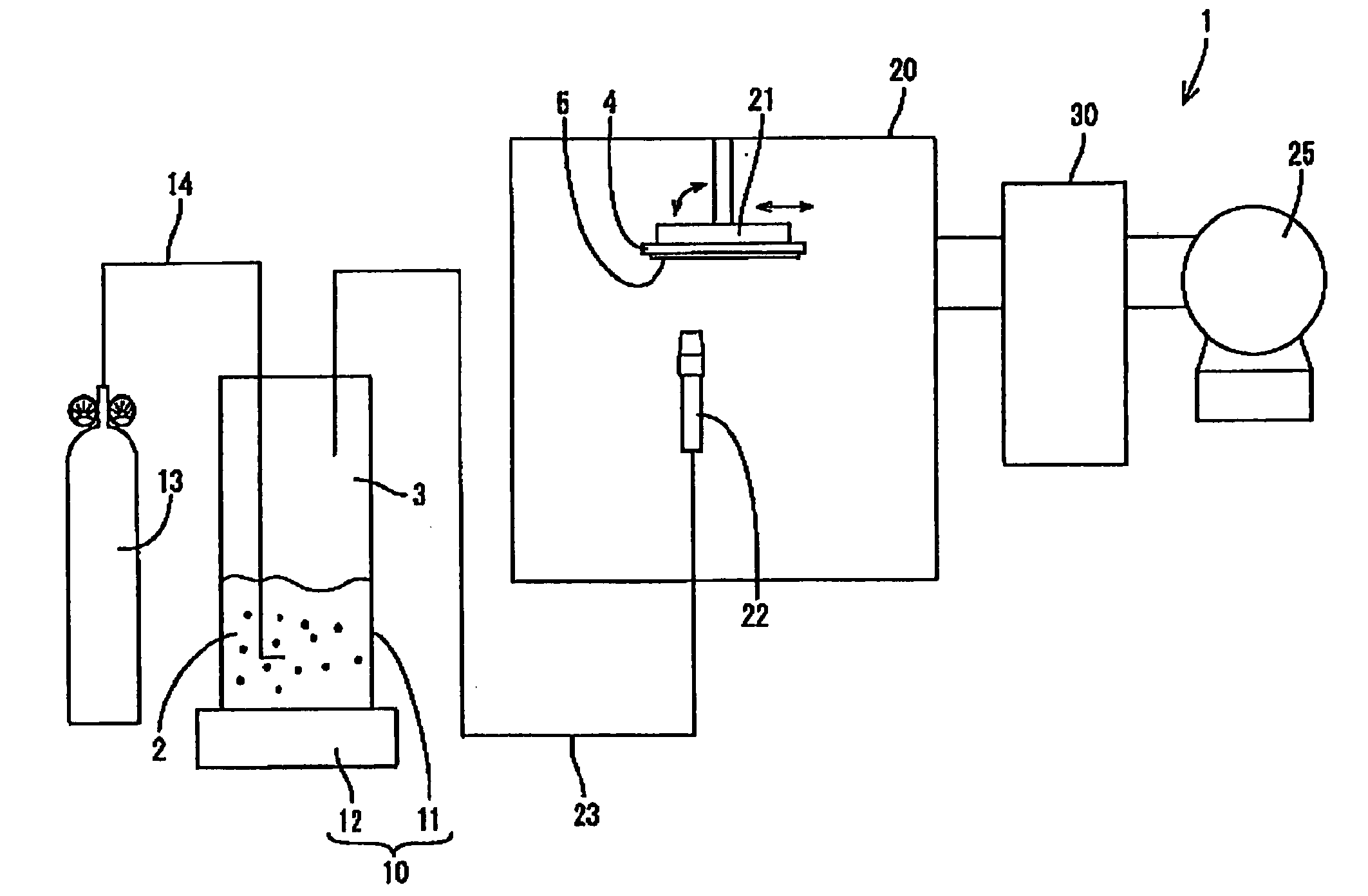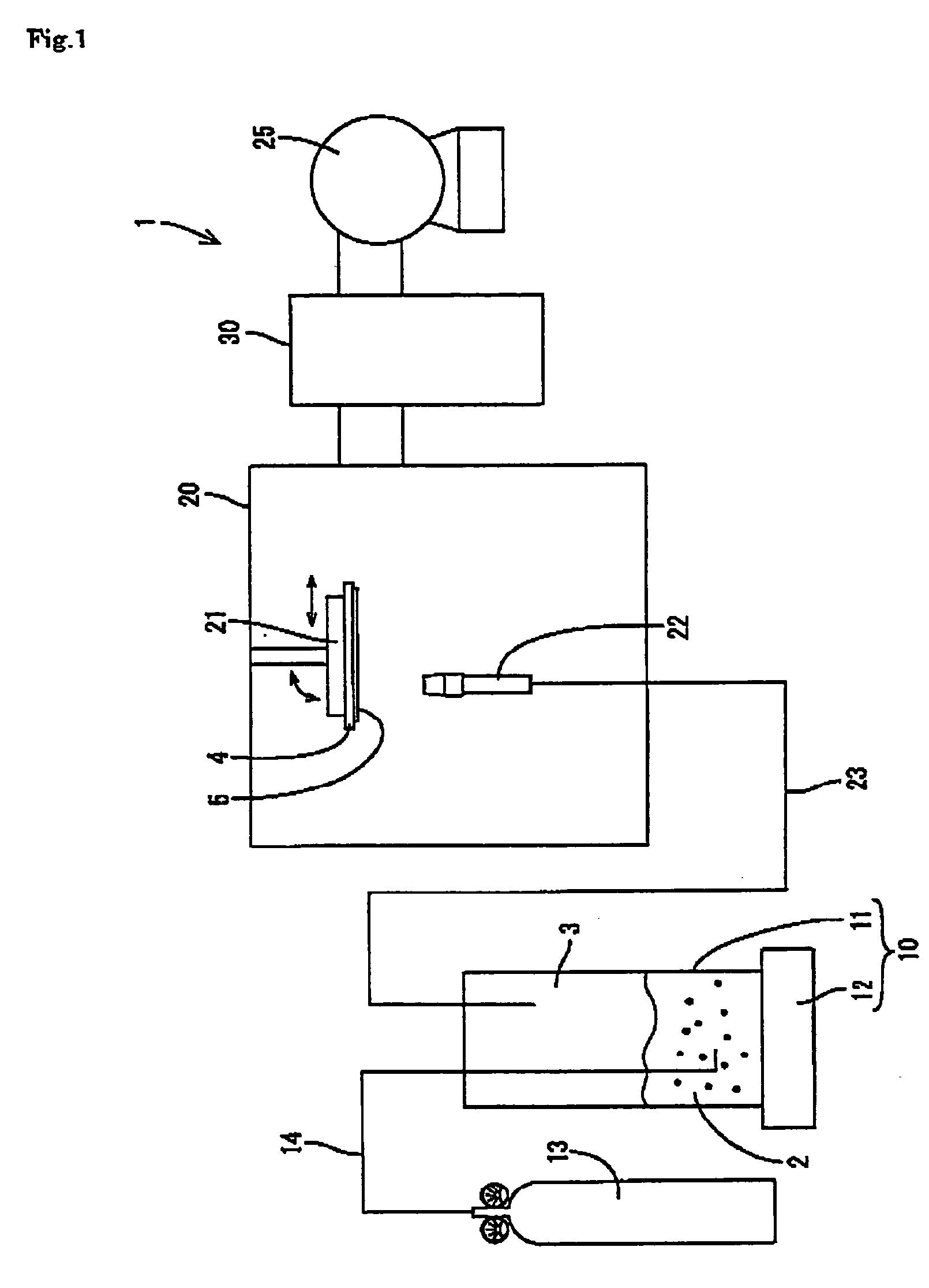Method for manufacturing film or piezoelectric film
- Summary
- Abstract
- Description
- Claims
- Application Information
AI Technical Summary
Benefits of technology
Problems solved by technology
Method used
Image
Examples
example 1a
[0046] For the substrate, a glass substrate was used wherein the adhesion surface ejected with the aerosol had a Vickers hardness of Hv 644. The adhesion surface was polished so that the ten-point average roughness (i.e., the average roughness of ten points selected optionally on the substrate) was Rz≦0.7 (Rz refers to ten-point average roughness prescribed by Japanese Industrial Standards). Also, PZT with an average particle diameter of 0.3 to 1 μm and a Vickers hardness of Hv 300 to 400 was used as the particulate film-forming material.
[0047] The Vickers hardness was measured according to nanoindentation using a Nano-Hardness Tester available from +CSM instruments as the measuring device where the Tester uses a Berkovitch indenter au the indenting device and a test force F is 0.008 N.
[0048] A piezoelectric film (PZT film) with a thickness of 10 μm was formed on a glass substrate by the same film forming apparatus as in the Example described above. The film forming conditions war...
example 1b
[0049] For the substrate, a glass substrate was used wherein the adhesion surface ejected with the aerosol had a Vickers hardness of Hv 644. The adhesion surface was polished so that the ten-point average roughness was Rz≦0.7 (Rz refers to ten-point average roughness prescribed by Japanese Industrial Standards). Also, ferrite with an average particle diameter of 0.3 to 1 μm and a Vickers hardness of Hv 960 to 1120 was used as the particulate film-forming material. Otherwise, a film was formed in the same manner as in Example 1a, and the outcome of the film formation was confirmed with the visual observation.
example 1c
[0050] For the substrate, a glass substrate was used wherein a ferrite film with a thickness of 3 to 5 μm was formed on the substrate surface ejected with the aerosol. The surface of the ferrite film was polished so that the arithmetic average roughness was Ra≦0.8 (Ra refers to arithmetic average roughness prescribed by Japanese Industrial Standards) and the ten-point average roughness was Rz≦0.7 (Rz refers to ten-point average roughness prescribed by Japanese Industrial Standards). The Vickers hardness of this ferrite film surface (adhesion surface) was Hz 985. Also, PZT with an average particle diameter of 0.3 to 1 μm and a Vickers hardness of Hv 300 to 400 was used as the particulate film-forming material. Otherwise, a film was formed in the same manner as in Example 1a, and the outcome of the film formation was confirmed with the visual observation.
PUM
| Property | Measurement | Unit |
|---|---|---|
| Breaking strength | aaaaa | aaaaa |
| Breaking strength | aaaaa | aaaaa |
| Speed | aaaaa | aaaaa |
Abstract
Description
Claims
Application Information
 Login to View More
Login to View More - R&D
- Intellectual Property
- Life Sciences
- Materials
- Tech Scout
- Unparalleled Data Quality
- Higher Quality Content
- 60% Fewer Hallucinations
Browse by: Latest US Patents, China's latest patents, Technical Efficacy Thesaurus, Application Domain, Technology Topic, Popular Technical Reports.
© 2025 PatSnap. All rights reserved.Legal|Privacy policy|Modern Slavery Act Transparency Statement|Sitemap|About US| Contact US: help@patsnap.com


